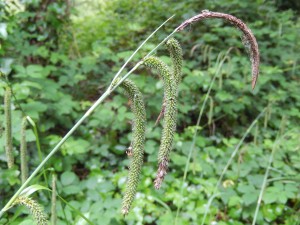With the light changing all the time in a showery airstream (and the Met. Office seemingly unable to get the forecast right for the last several days, wrong every time to my surprise), things looked hopeless for butterflies (just a Speckled Wood or two) and insects (a few leaf beetles, hoverflies and bees).
So we picked up a field guide and a couple of identification sheets, and went out to see what grasses we could find between three of us.
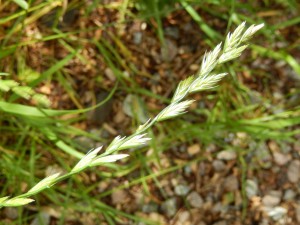
Ryegrass is a tough grass useful in lawns. Its neatly alternating spikelets make it easy to identify.
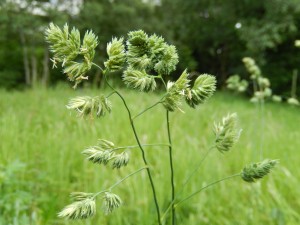
Cocksfoot is a taller grass with a head that somewhat resembles the shape of a bird’s foot with its chunky branching spikelets to left, centre and right .
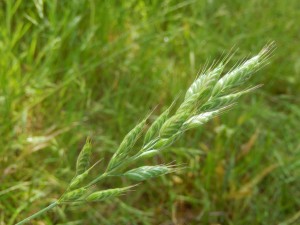
Soft Brome is as its name suggests soft to the touch; its spikelets like most Bromes are compactly plump and rounded, they form a pattern of green and white stripes, and they have awns (little barley-like spines). It’s quite distinctive once you’ve seen it.
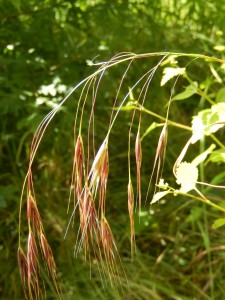
Barren Brome looks very different: perhaps its name comes from the way it appears to have nothing much in its seed-heads, which are thin, triangular and very spiky; the plant is altogether long and thin and dark purplish-brown.
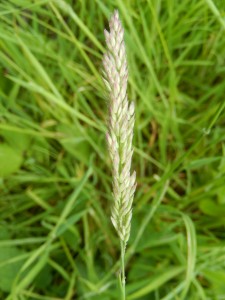
Yorkshire Fog, a beautiful name for a lovely soft plant, is thick and tall with broad soft leaves and a remarkably thick, soft seedhead. It’s one of those plants you can recognise twenty yards off once you know it.
The reserve has some False Oat-grass which in theory we should be pulling out – it seem unlikely given the way it’s tightly integrated with the rest of the grasses and herbs, so it’s probably here to stay.
There seem to be several Fescue grasses in the thin strip of acid grassland along the line of the old railway – the clinker that the sleepers rested on consisted of chunky angular chips of hard acid rock from somewhere far from London. One is Sheep’s Fescue: there may be Red Fescue, and there is something that looks like one of the taller Fescues too.
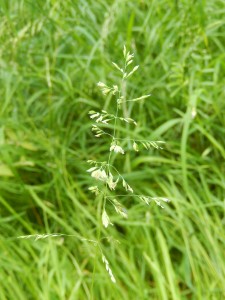
The Meadowgrasses have a typical light open panicle for their seedhead, giving a rather delicate appearance with their slim stems. I carefully checked which kind this one was; it has a pointed ligule where the leaf joins the stem, and is gently rough with little hairs, so it’s the Rough Meadowgrass.
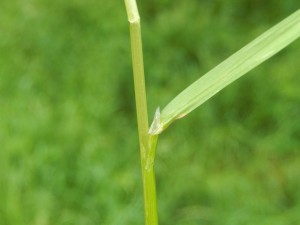
In the woods near the path there are tufts of a broad-leaved grass that tolerates shade: it’s the Wood Melick. Finally, there’s one conspicuous grasslike plant that enjoys the wetter places here: the Pendulous Sedge. It’s a bit invasive but so handsome that I always admire it.
